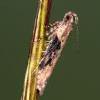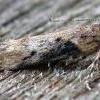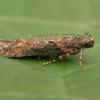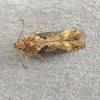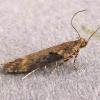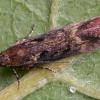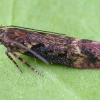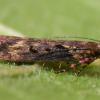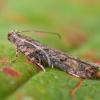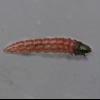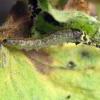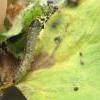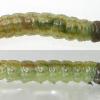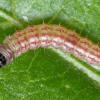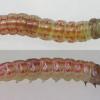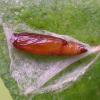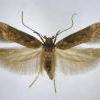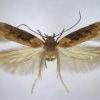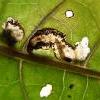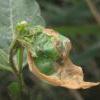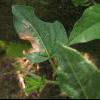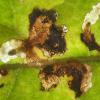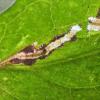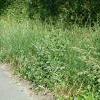35.123 Scrobipalpa costella (Humphreys & Westwood, 1845)
Status and Distribution
Widespread and common over much of central and southern England, Wales and the Channel Islands; locally common in parts of northern England; predominantly coastal in Ireland, Isle of Man and eastern, central and southern Scotland, with a single record from the north west coast in Shieldaig. A record of larva from the Highlands in 1975 appears to be in error.
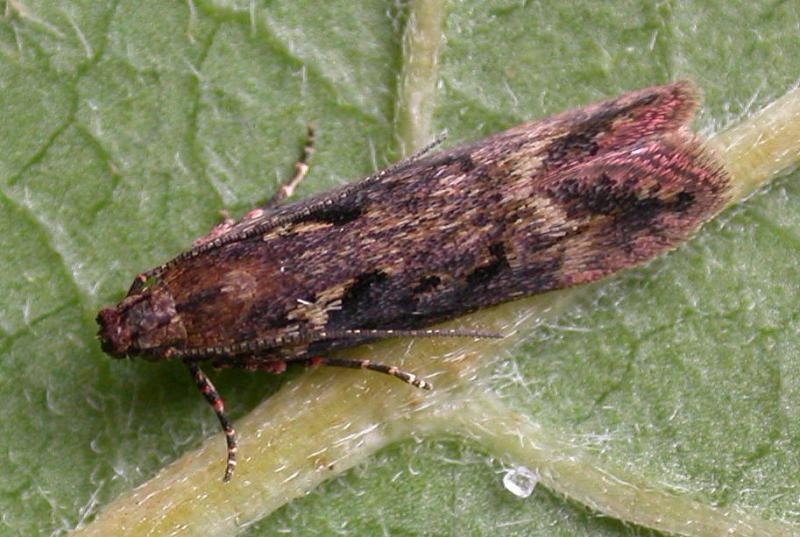
Provisional map
Foodplant and Larval Feeding Signs
Solanum dulcamara (bittersweet / woody nightshade), see plant distribution map, Atropa belladonna (deadly nightshade) and, once, Solanum melongena (aubergine). In Europe there are unconfirmed records of it utilising Solanum tuberosum (potato).
The moths have been reported emerging from spongy oak galls collected in December and from thistle heads collected over the winter suggesting that the larva can wander some distance from its usual foodplant to pupate.
Generally feeds from irregular blotch mines in a leaf (see notes under Finding and Similar species).
Finding the Moth
Larva: mines the leaves initially from the midrib area producing irregular blotch mines sometimes containing frass. Older mines, which can extend to the leaf margins, are brownish and often inflated. The larva has also been found in the berries, the stem, or between lightly spun leaves without mining. May occasionally over-winter in the stem as a larva.
Adult: occasionally found in houses, can be swept from hedgerow vegetation and in Hertfordshire in 1969 was attracted to a sugared post; most frequently encountered at light.
Similar Species
The large dark fuscous to blackish subtriangular marking along the costa (leading edge) of the forewing is only otherwise found in the much larger and paler Hypatima rhomboidella. On occasions this dark marking, although still just about visible, can be obscured or almost absent and if there is any doubt then dissection is recommended.
In Europe, there is a similar species (Scrobipalpa hyoscyamella). This is generally paler, the costal triangle just reaching halfway down to the dorsum (two thirds in S. costella) and lacks any pink scales on the forewing. The costal triangle is more diffuse toward the termen in S.costella. The larva of S. hyoscyamella feeds on Hyoscyamus (henbane), an introduced plant found quite widely in southern and eastern England, and has also been found on bittersweet. This species has been reported (it is believed incorrectly) from Jersey in the 19th century and should this species be suspected a specimen should be retained and a dissection carried out.
Acrolepia autumnitella also mine bittersweet, the larva being whitish with a pale pink head as opposed to the blackish head and prothoracic plate of S. costella. The mines of A. autumnitella can be viewed at http://www.leafmines.co.uk/html/Lepidoptera/A.autumnitella.htm
The larva of Tuta absoluta, although primarily a pest on tomatoes, is known to feed on occasions as a leaf-miner in various members of the Solanaceae in Europe. Now this species is becoming more widespread in southern and eastern Britain this should be borne in mind when recording S. costella larval feeding signs. Where the larva is present, that of S. costella has segments two and three (the area behind the broad blackish prothoracic plate) a dull purplish brown colour. In T. absoluta this area is yellowish to pale green beyond the narrower black plate, while Acrolepia autumnitella, another species that feeds on Solanaceae, lacks the black pro-thoracic plate.
Probably double-brooded with flight period peaks from early May to late June and from mid-July to late October. The moth has, however, been found in almost every week of the year with the lowest numbers occuring from December to March. This suggests it may be able to over-winter as a larva, pupa or adult.

